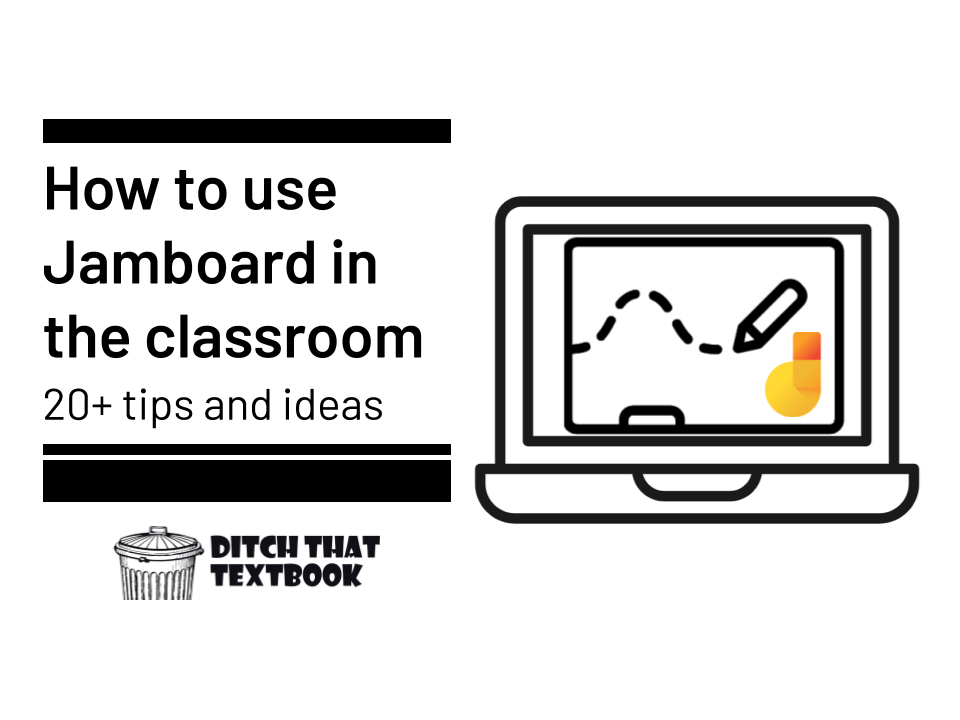
Jamboard is a collaborative online whiteboard. It gives students lots of creative work space. How do you use Google Jamboard in the classroom? Check out these ideas!
Whiteboards and chalkboards have been a fixture in classrooms for ages. They're great for gathering ideas and making thinking visible.
But there are drawbacks ...
- Having to write "DON'T ERASE!" next to important stuff
- Taking pictures of the whiteboard with your cell phone
- Markers drying up or running out of ink
- Having only so much whiteboard space in your classroom
If you can sympathize, you've got to check out Google's Jamboard app. Jamboard (jamboard.google.com) is a physical device -- an interactive touchscreen display/monitor, and it's pricey. But thankfully, the app that runs on those interactive displays is a teacher's favorite price -- FREE!
The Jamboard app is a fantastic tool for learning in face to face environments and for virtual/remote learning. The features are simple and intuitive. It's really easy to collaborate. Plus, it's very visual.
What is Google Jamboard?
You can find Jamboard by going to jamboard.google.com. You can also find it by clicking the "New" button in your Google Drive and hovering over "More".
Don't have touchscreens? That's OK. You can use a mouse or touchpad on a laptop or Chromebook. Or you can download the Jamboard app for Android or iOS (Apple) mobile devices.
When you open Jamboard, you'll see all of the recent jams you've opened. You can click the + button in the bottom right to create a new jam.
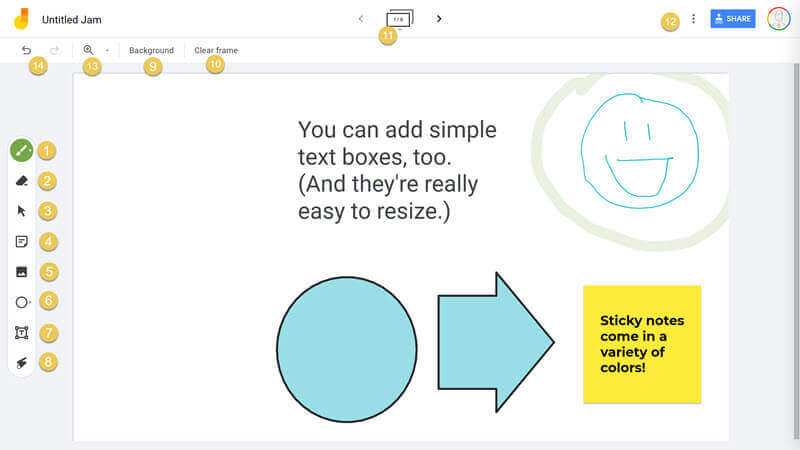
Note: This view is the online version from a browser, as seen on a laptop or Chromebook.
1. Draw: Use a pen, marker, highlighter or brush. You can draw from pre-determined colors.
2. Eraser: Erase something you've drawn.
3. Select: Choose and adjust a shape, sticky note, image, text box.
4. Sticky note: Add a sticky note with text. You can choose from several colors.
5. Image: Add an image from your device, image search, Google Drive or Photos.
6. Shapes: Add a circle, square, triangle, diamond, rounded rectangle, half circle, bar or arrow. Choose border color and fill color from the menu bar at the top of the jam.
7. Text box: Add a box where you can type and format text.
8. Laser: Use a pointer to emphasize and highlight certain items on the screen when presenting ideas to others.
9. Background: Choose from dots, lines, graph, or dark colors.
10. Clear frame: Wipe everything off your frame with one click. (Undo if it was a mistake!)
11. Frame bar: See all of your frames in one place. Add new frames, duplicate or delete.
12. Menu: From here, you can rename your jam, download it as a PDF, save a frame as an image, remove, or make a copy your jam.
13. Zoom: Zoom in, zoom out, or fit to window.
14. Undo and redo: I'll bet you know all about this one already.
Note: If you watch videos or read documentation about Jamboard, you might get excited about some features that you can't access by just using the free app. Integrating Google Meet, adding files from Drive, and some other features only work when you purchase the interactive display. When in doubt, try it out on the app first.
Student collaboration with Jamboard
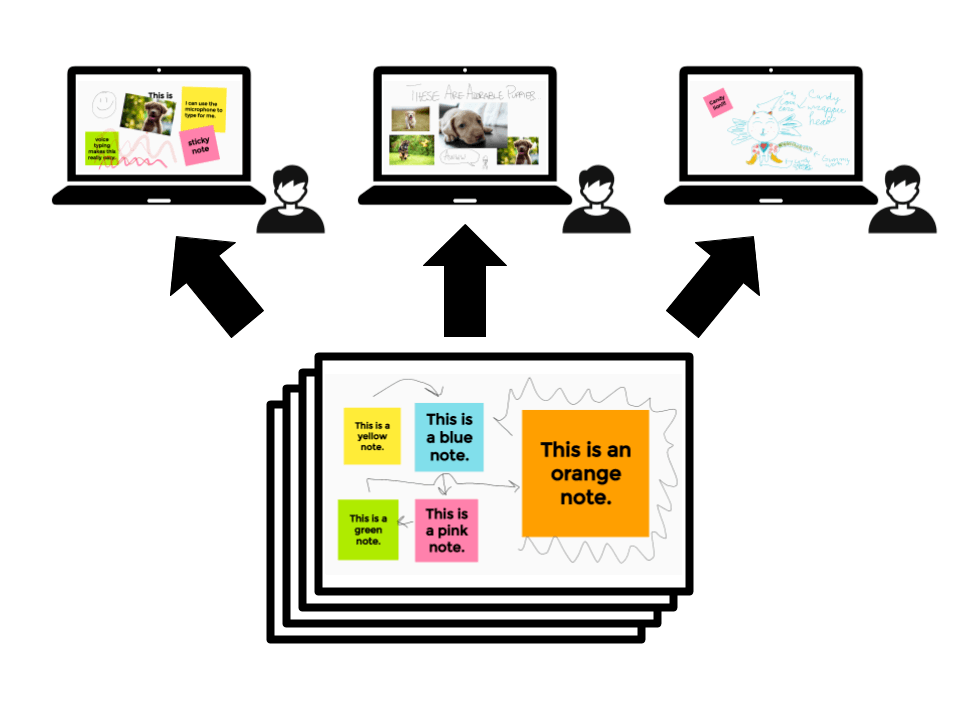
Jamboard is made for collaboration! You can also share your jams just like you'd share a document or slide presentation. Click the "Share" button and share with individuals and groups or create a shareable link.
Students can interact in jams in lots of ways:
- Students can brainstorm and create in small groups face to face on one device.
- Share an "everyone can edit" link with students in Google Classroom for whole-class collaboration.
- In remote or online settings, students can work together in small groups in the same jam.
In lots of the ideas below, you can add a layer of collaboration by giving students an "anyone can edit" link.
Note: Jamboard does not have a version history. This does remove an element of accountability that encourages students not to abuse the activity, writes Wes Fryer in his Speed of Creativity blog. You know your students, so you may well know whether they'll abuse this situation or not. I could see using it with small groups more readily than a whole group because the one who acts out is usually trying to perform for a large audience. You can always use Jamboard to display your own ideas and make them viewable later.
The Do More with Google Jamboard
Online Course!

This course will introduce you to Jamboard features you might not know. It will give you dozens of ideas for using it in the classroom.
Plus, it provides you with:
- A collection of more than 100 templates.
- 40 activity ideas you can use immediately
- Tutorial slides to use as a quick visual review.
- Interactive infographics you can give your students
- Video playlists, posts, and extra resources.
20 ideas for using Jamboard in class (+ FREE templates!)
So ... what could this look like in class? I'm glad you asked! Here are several ideas for using it with your students. If you like the ideas, then click the "Get this template!" button and make a copy of a template you can use right away with students!
1. Use shapes to highlight.
When you draw a shape on Jamboard, you can set the fill color as transparent. Make the border colors different colors and have each one stand for something (like parts of speech in a sentence). Students can duplicate the boxes and use them to highlight important parts of the content on the frame.
2. Add text to a jam and annotate
Take a screenshot of a text -- a passage from a book, part of an article, etc. Encourage students to annotate it by using the highlighter or dragging frames around important sentences. Then, they justify their responses. Use multiple frames for multiple passages if needed.
7. Teaching whiteboard
Using Jamboard as a teaching whiteboard has lots of benefits. For remote learning, it's a whiteboard you can share on your screen during a video call. Plus, when used anytime in any setting, you can always share your whiteboard with students to view later -- and bring it back up to add to it.
9. Screen record to describe thinking
How do we know what students are thinking when they create with Jamboard? Let's give them a way to tell us! Have students do screen recordings of their jams with a tool like Screencastify. They can describe what they've done, show us how they do it, and tell us why.
10. Graphic organizers
Graphic organizers give students a space to think. They can walk students through a line of thinking. They can help them get their ideas in order. Create graphic organizers in Jamboard and students will be able to draw, write, and move items around. Here are lots of graphic organizers you can download (File > Download > PNG image) to put on a Jamboard frame.
12. Sticky note brain dump
This is a great study technique for long-term learning! Retrieval practice tells us that a "brain dump," where we recall everything we can about a topic, is better stored in long-term memory than if we re-read chapters or notes. Provide a space where students can do a brain dump. (Note: Ctrl+Enter lets students complete a sticky note and start typing on another one.)
15. Mad Libs
These silly stories can be a lot of fun! They can also give students practice with different parts of speech. On one frame of a jam, have students write out their words. Then, they can cut the sticky notes with the words and paste them on the second page, where you've written the story. (Be sure to include hard returns / spaces between lines of text so there's plenty of room for the sticky notes.)
16. The whole class jam
Everyone gets a frame in this jam. The first thing students do is write their name at the top of their jam. Then, they answer a question or respond to a prompt you give them. When they're done writing, adding images, drawing, etc., they can go look at each others' responses. The best prompts for this are those where there isn't a single correct answer.
17. Character notes
Studying a character in a story? In history? In current events? Students can use a jam to gather all the details they can about that character. Or students can gather details on different characters on different frames of a jam. Add images. Add lots of details. Maybe draw a picture of that character!
19. Sketchnoting
Sketchnoting -- or visual notetaking -- blends the verbal (words) with the visual (images). It's very brain friendly. When students get used to adding images to their notetaking, they'll find that it's easier to remember things they've learned. Jamboard can be a great spot for visual notetaking, especially if students have a touchscreen device.
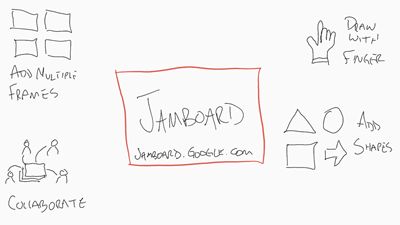
20. Small group notetaking
When students meet in video call breakout rooms, Jamboard can be a great place for them to take collaborative notes. Have one student create a jam and share it with fellow students. Use the "everyone with the link can edit" sharing setting. Students can then take notes in the same document.
Google Jamboard tips and tricks:
- Control D to duplicate. For many items on Jamboard, you can choose duplicate out of a menu. But using the keyboard shortcut (Control D) can save lots of time.
- Voice typing. Jamboard doesn't offer voice typing for those that struggle with using a traditional keyboard. But students can always open a Google Doc and use voice typing out of the Tools menu. Copy and paste the text into Jamboard.
- Make jams available to students. Grab a share link to any jam you use to teach students. Put that link somewhere in Google Classroom or a class website so students can access it later. (Adding the link to the description of an assignment connected to that jam streamlines things!)
- Make jams into templates you can copy. Want to make templates that you force the user to copy -- like I did in this post? Click the "Share" button and change the link to "Anyone with the link can view". Copy the link. Then, when you paste the link, change the end of it, deleting the word "edit" and everything after it ... then typing the word "copy" in its place. That link will force the user to make a copy of your file.
More Google Jamboard resources:
- Google Jamboard training resources from the Google Teacher Center
- 10 Jamboard templates for distance learning (with Kris Szajner)
- Google Teacher Podcast Ep. 96: Using Jamboard for Digital Thinking
- The Suite Talk: An overview of Jamboard with Tom Mullaney
- Bring Collaboration to the Next LEvel with the Google Jamboard App (with Tom Mullaney)
- Google Jamboard in a Virtual Learning Environment (by Maria Arfanakis Galanis)
Have you used Jamboard? What are your best tips, tricks and ideas? Please share them in a comment below!
For notifications of new Ditch That Textbook content and helpful links:
Are you looking for quality, meaningful professional learning that both equips and inspires teachers?
Matt provides in-person and virtual keynotes, workshops and breakout sessions that equip, inspire and encourage teachers to create change in their classrooms. Teachers leave with loads of resources. They participate. They laugh. They see tech use and teaching in a new light. Click the link below to contact us and learn how you can bring Matt to your school or district!
Is Matt presenting near you soon? Check out his upcoming live events!

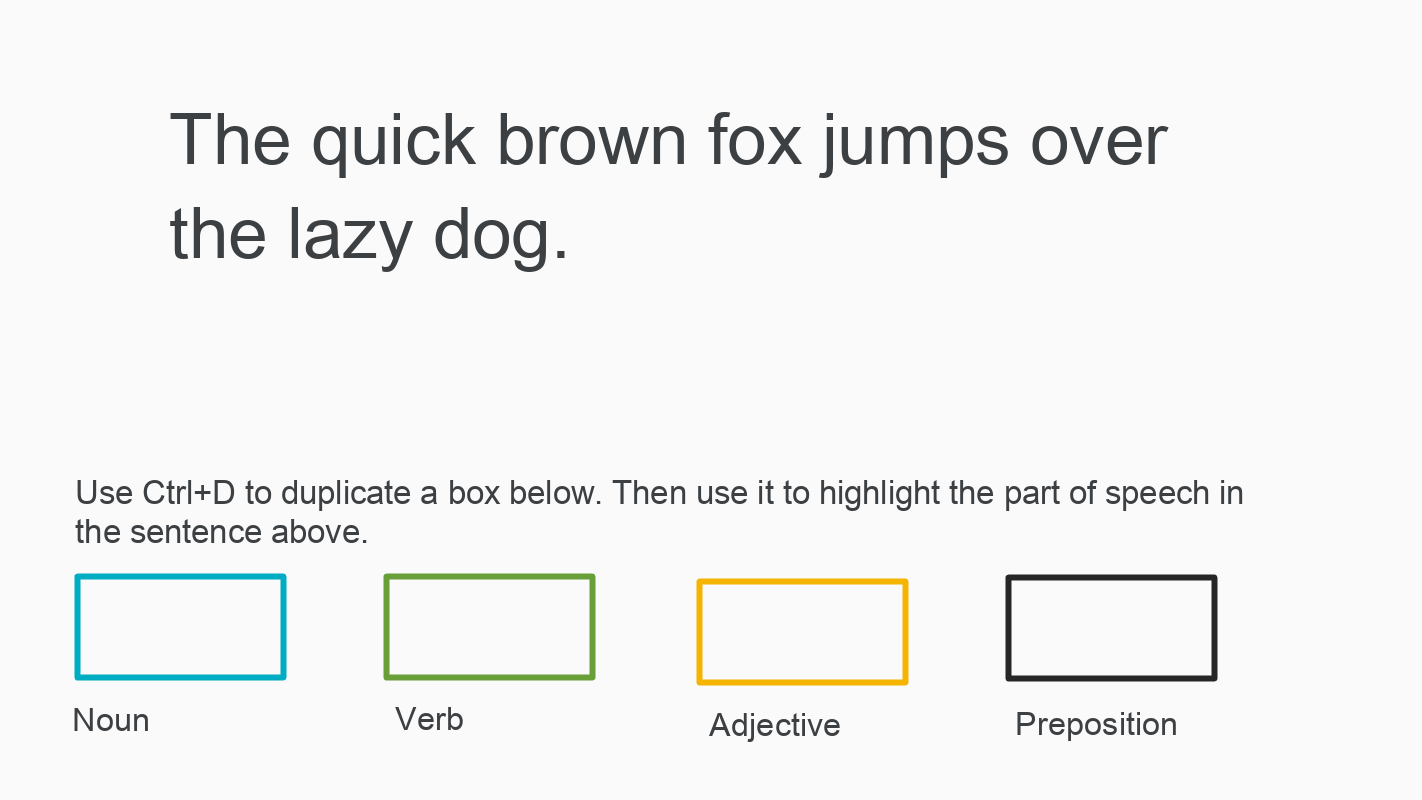
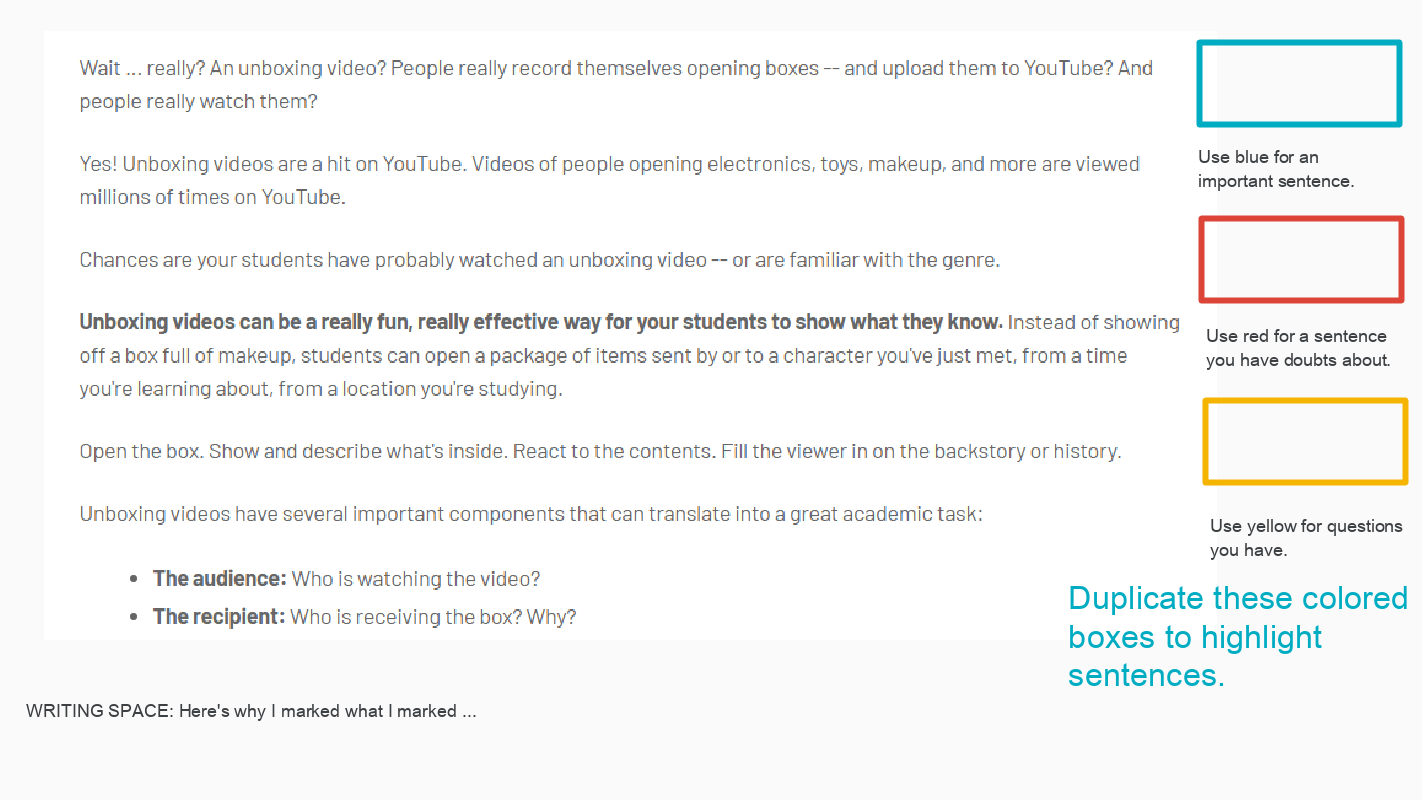


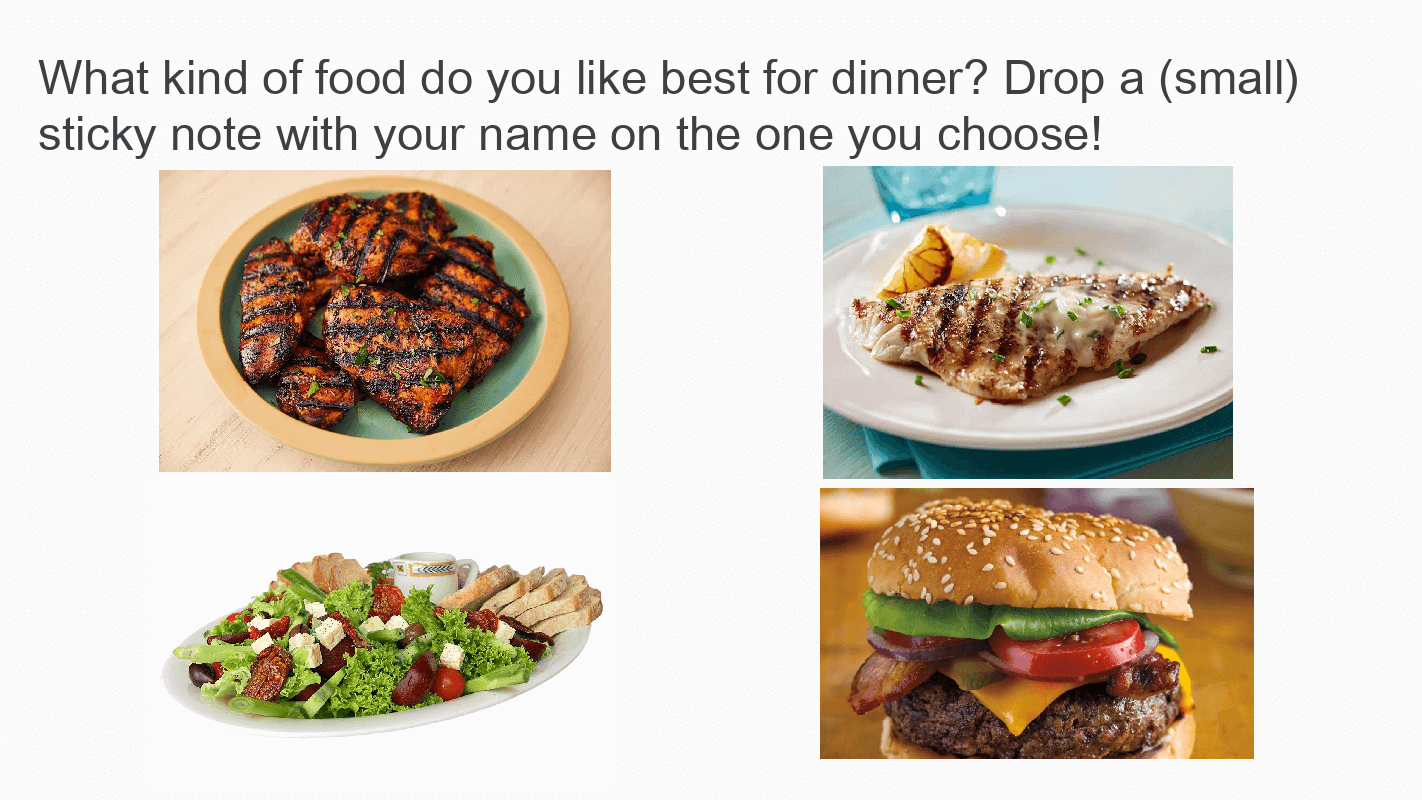
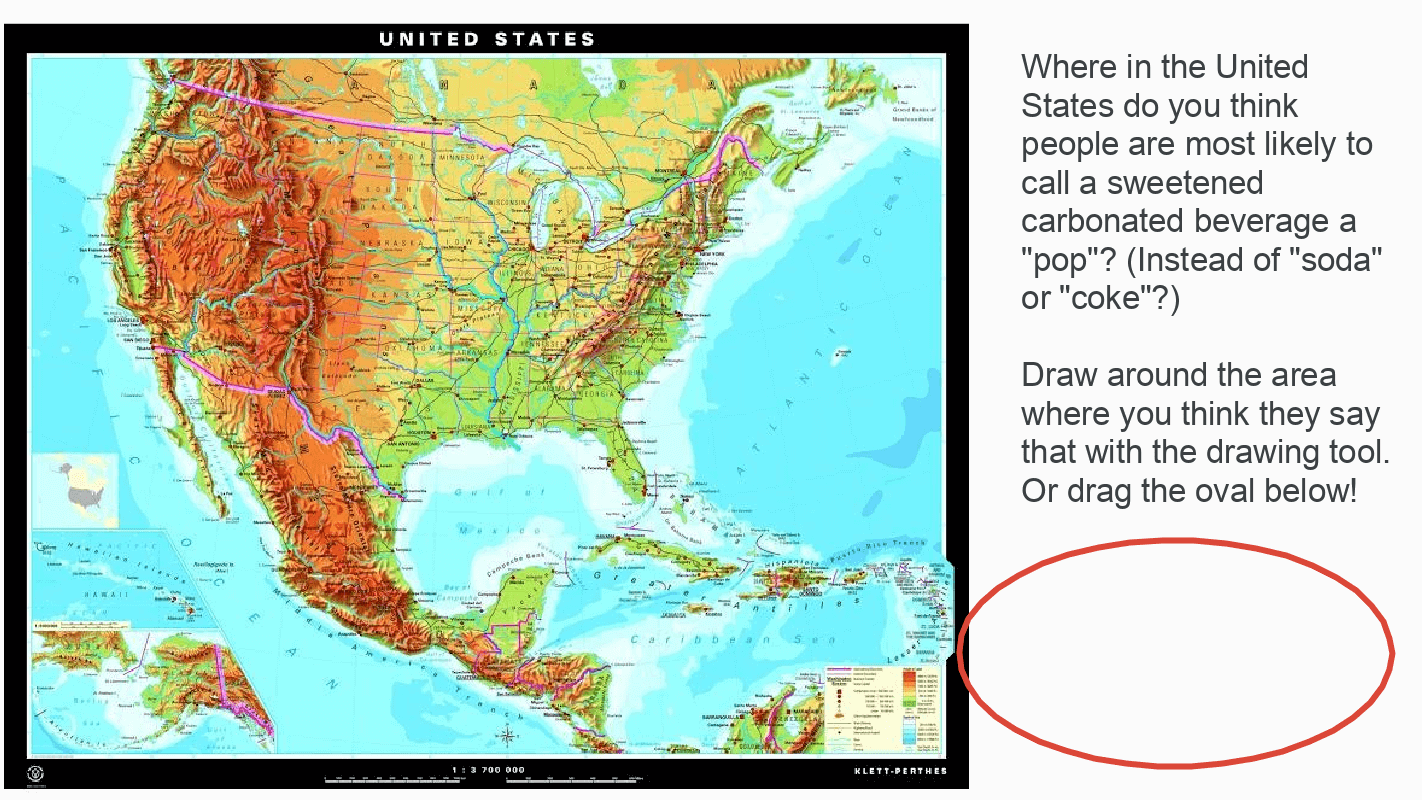
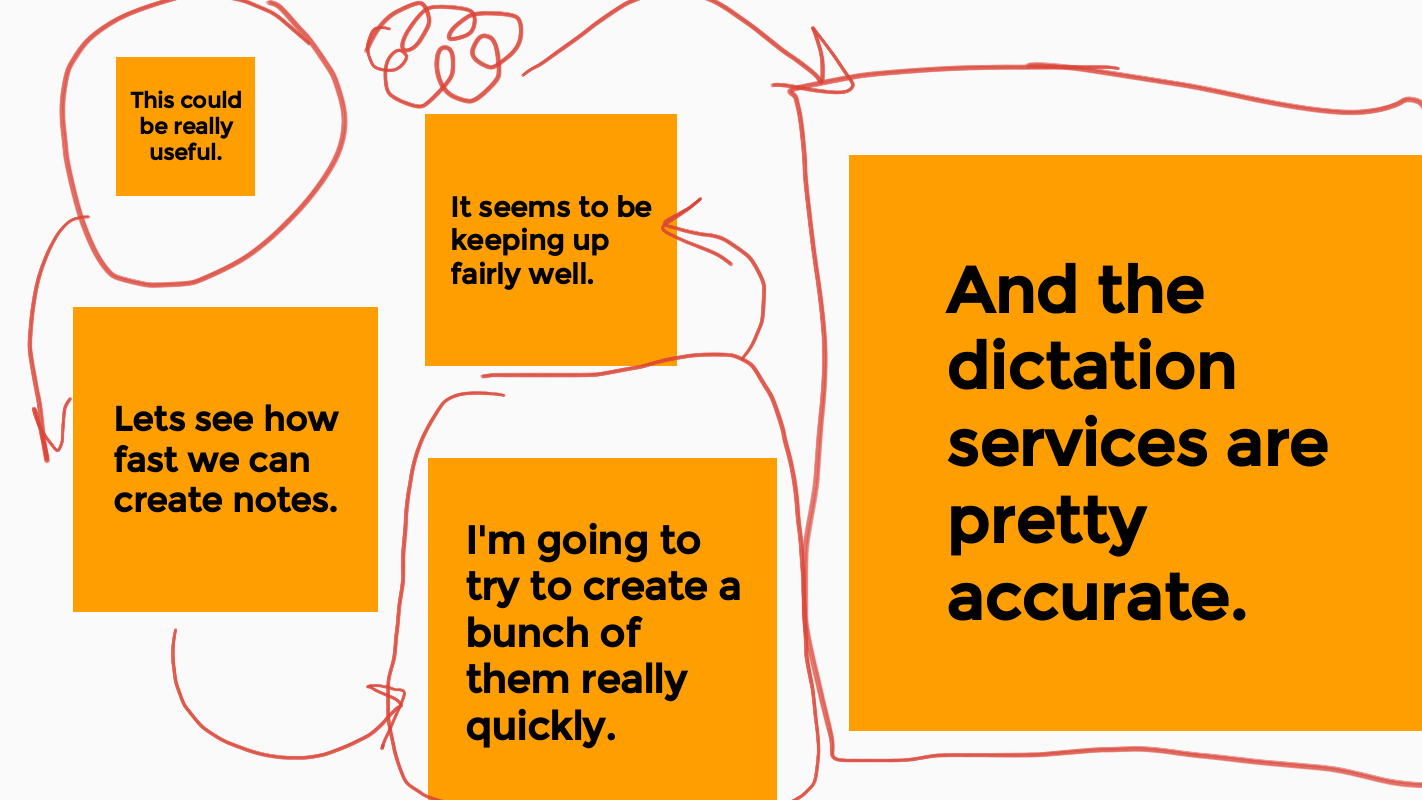
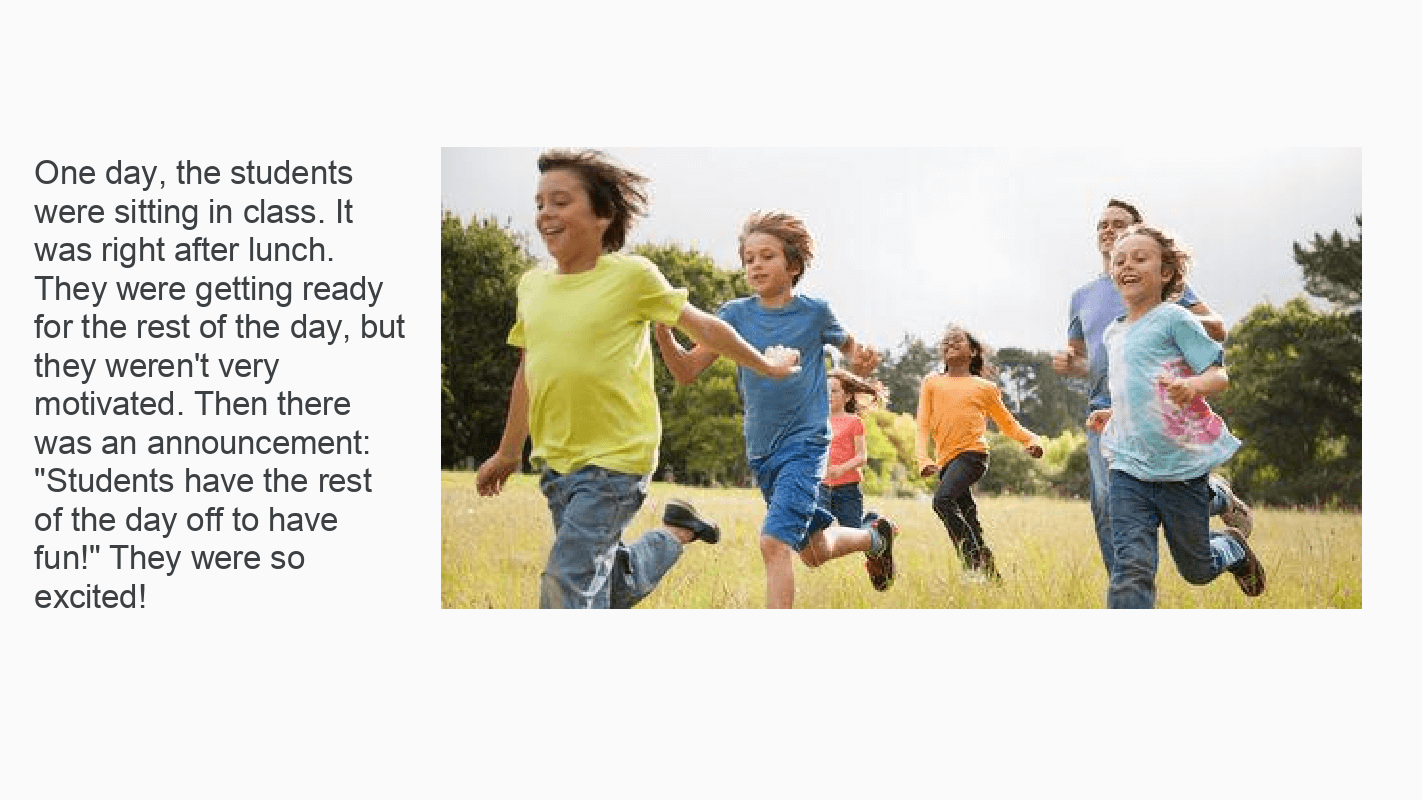
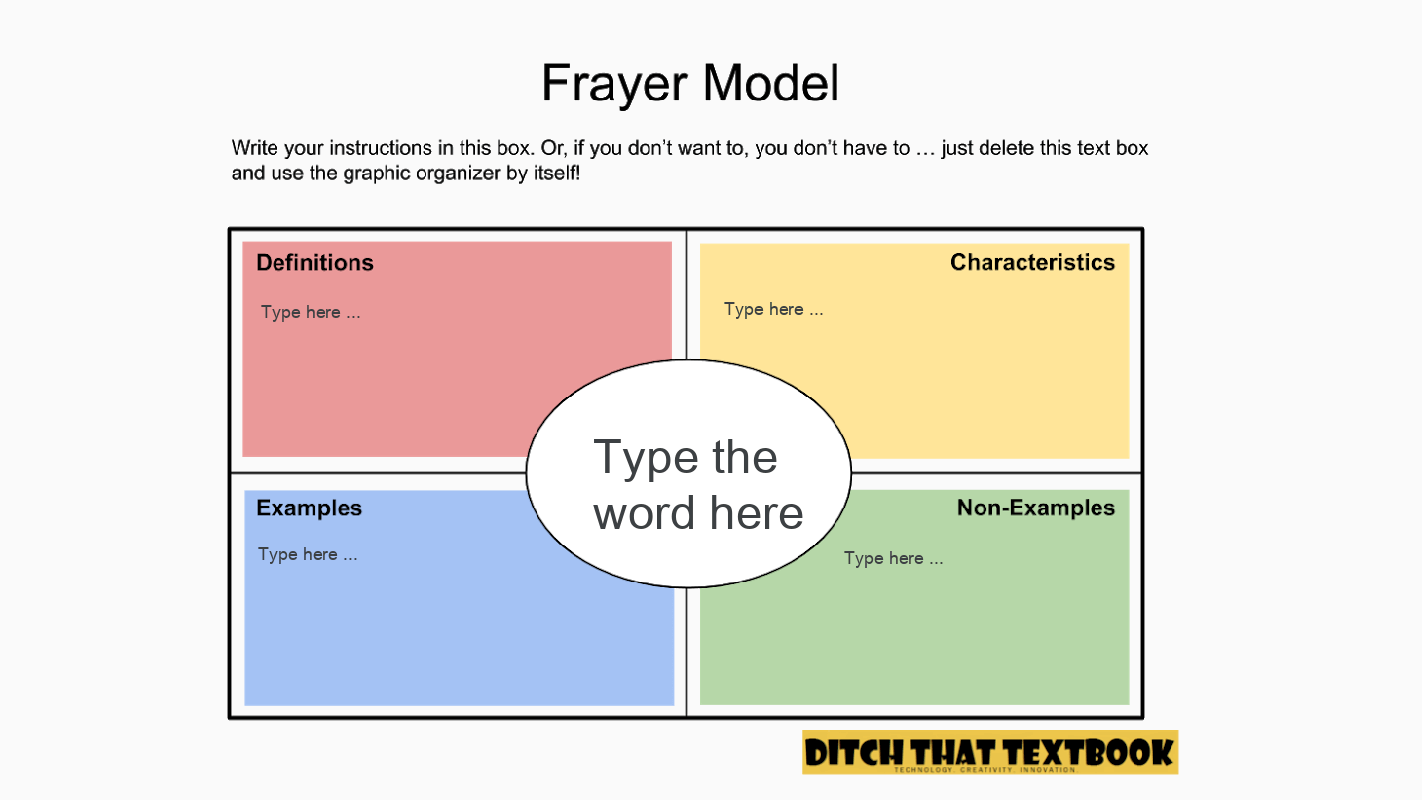
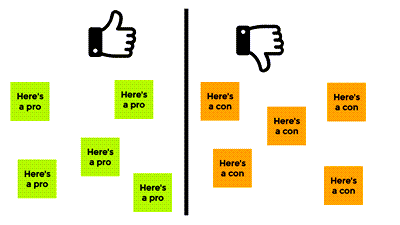
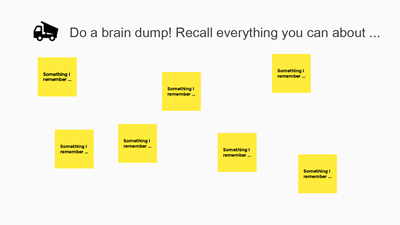
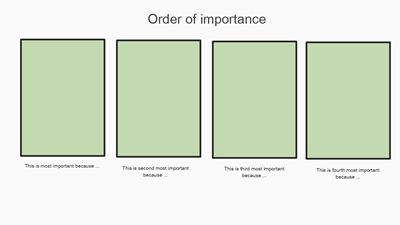
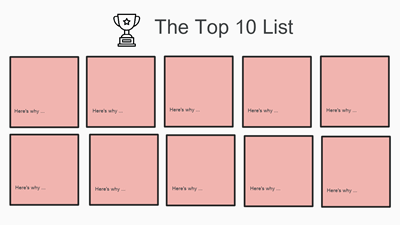
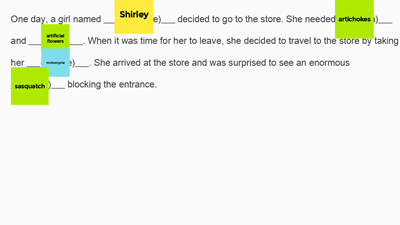

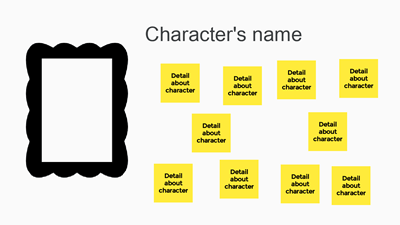
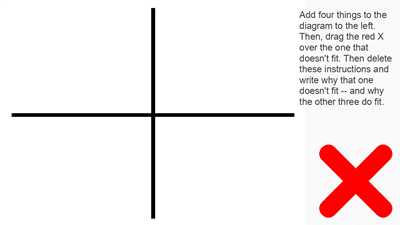


I loved using Jamboard for a fun, interactive way of seeing what my kids know, or have learned about a topic, or a story using sticky notes
sup
“7. Text box: Add a box where you can type and format text.”
I don’t think you can format text! I wish you could…
I am a BC Calculus teacher and would like to know how a student can show me a handwritten homework problem she has already done at home on jamboard or is there another way to see that virtually without having to write it out again? We are using zoom meetings and are on canvas.
Hi Linda – students can take a picture of their handwritten work and upload to the Jamboard. We have some of our 5th graders doing that for math assessments.
Yeah, sorry — Jamboard is useless for classroom collaboration. Literally any student can anonymously delete everything anyone does.
, try again.
The kids in 3rd grade use jam board they love the sticky notes.
I used Jamboard with my kindergarten class for my letter of the day. I typed their names on a sticky note. Each child had to find their name and sign in by answering a question.
These are great ideas! Thank you for sharing. Unfortunately, I can’t seem to get more than 17 users on a Jamboard. Is anyone else having this problem? Any known solution?
[…] […]
Matt, # 16. The “whole class jam” is not not sharing as needed – permissions need to be updated. Thanks for sharing all of this. BTW, paddled the Sugar Creek two weekends ago. Certainly need more water as levels were low and had a lot of walking. I thought of you as I was in your neighborhood. Andy Mann
Any way to know WHO is making comments?
You have to just watch. I have learned which students are which avatars and call them out when they are doing something bad, but I teach high school.
Hi,
Anyone out there know if there’s a way to embed links into a Jamboard slide?
[…] your “Jam” on with this collection of 20+ Jamboard tips, ideas, and templates (you’ll have to scroll to the bottom of the linked post for the templates) you can use with […]
[…] How to use Jamboard in the classroom: 20+ tips and ideas – Ditch That Textbook […]
[…] keep reading about Jamboard and am thinking of ways to use it in the […]
[…] Read the full story by Ditch That Textbook […]
I love all of these so much. I made a copy of a ton! Now I need to go organize them lol!
Hi, I’m a Uni student and love the idea of using Jamboard. I need to do a presentation for an assignment. My marker needs to open the URL of my Jamboard then hit one button and watch my 15-slide presentation scroll itself without hitting the ‘next’ arrow. How do we get Jamboard to step through automatically? thanks